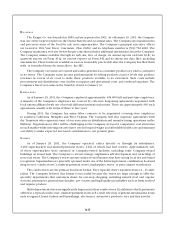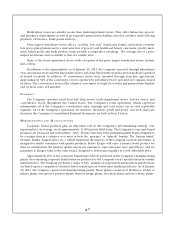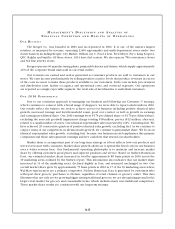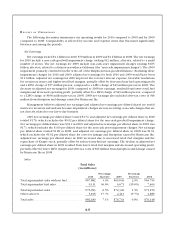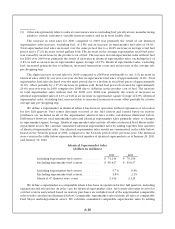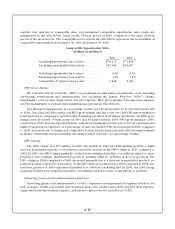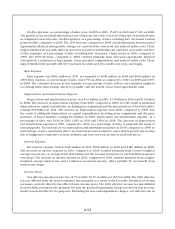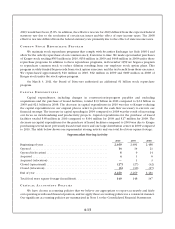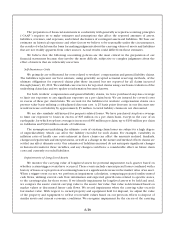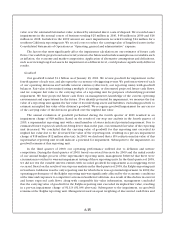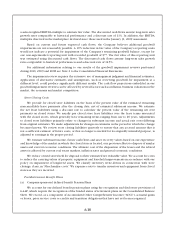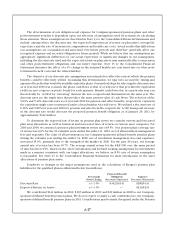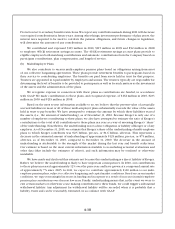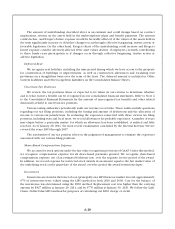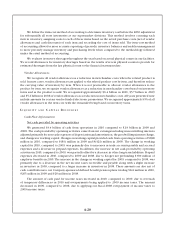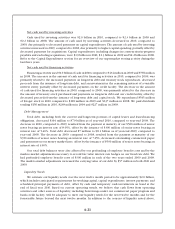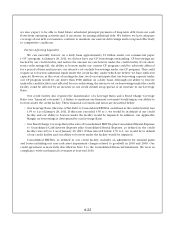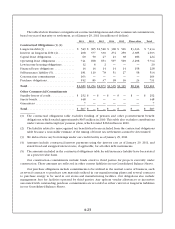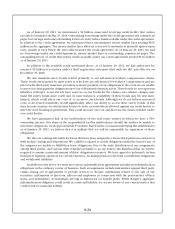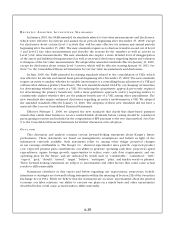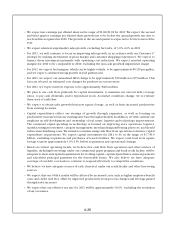Kroger 2010 Annual Report Download - page 96
Download and view the complete annual report
Please find page 96 of the 2010 Kroger annual report below. You can navigate through the pages in the report by either clicking on the pages listed below, or by using the keyword search tool below to find specific information within the annual report.
A-16
a sales-weighted EBITDA multiple to estimate fair value. The discounted cash flows assume long-term sales
growth rates comparable to historical performance and a discount rate of 11%. In addition, the EBITDA
multiples observed in the marketplace declined since those used in the January 31, 2009 assessment.
Based on current and future expected cash flows, the Company believes additional goodwill
impairments are not reasonably possible. A 10% reduction in fair value of the Company’s reporting units
would not indicate a potential for impairment of the Company’s remaining goodwill balance, except for
one non-supermarket reporting unit with recorded goodwill of $77. The fair value of this reporting unit
was estimated using discounted cash flows. The discounted cash flows assume long-term sales growth
rates comparable to historical performances and a discount rate of 12.5%.
For additional information relating to our results of the goodwill impairment reviews performed
during 2010, 2009 and 2008 see Note 2 to the Consolidated Financial Statements.
The impairment review requires the extensive use of management judgment and financial estimates.
Application of alternative estimates and assumptions, such as reviewing goodwill for impairment at a
different level, could produce significantly different results. The cash flow projections embedded in our
goodwill impairment reviews can be affected by several factors such as inflation, business valuations in the
market, the economy and market competition.
Store Closing Costs
We provide for closed store liabilities on the basis of the present value of the estimated remaining
noncancellable lease payments after the closing date, net of estimated subtenant income. We estimate
the net lease liabilities using a discount rate to calculate the present value of the remaining net rent
payments on closed stores. We usually pay closed store lease liabilities over the lease terms associated
with the closed stores, which generally have remaining terms ranging from one to 20 years. Adjustments
to closed store liabilities primarily relate to changes in subtenant income and actual exit costs differing
from original estimates. We make adjustments for changes in estimates in the period in which the change
becomes known. We review store closing liabilities quarterly to ensure that any accrued amount that is
not a sufficient estimate of future costs, or that no longer is needed for its originally intended purpose, is
adjusted to earnings in the proper period.
We estimate subtenant income, future cash flows and asset recovery values based on our experience
and knowledge of the market in which the closed store is located, our previous efforts to dispose of similar
assets and current economic conditions. The ultimate cost of the disposition of the leases and the related
assets is affected by current real estate markets, inflation rates and general economic conditions.
We reduce owned stores held for disposal to their estimated net realizable value. We account for costs
to reduce the carrying values of property, equipment and leasehold improvements in accordance with our
policy on impairment of long-lived assets. We classify inventory write-downs in connection with store
closings, if any, in “Merchandise costs.” We expense costs to transfer inventory and equipment from closed
stores as they are incurred.
Post-Retirement Benefit Plans
(a) Company-sponsored defined benefit Pension Plans
We account for our defined benefit pension plans using the recognition and disclosure provisions of
GAAP, which require the recognition of the funded status of retirement plans on the Consolidated Balance
Sheet. We record, as a component of Accumulated Other Comprehensive Income (“AOCI”), actuarial gains
or losses, prior service costs or credits and transition obligations that have not yet been recognized.


